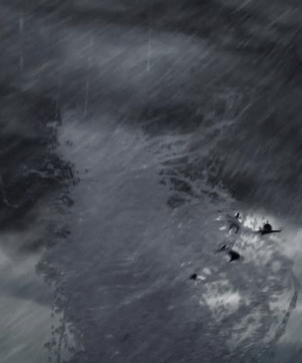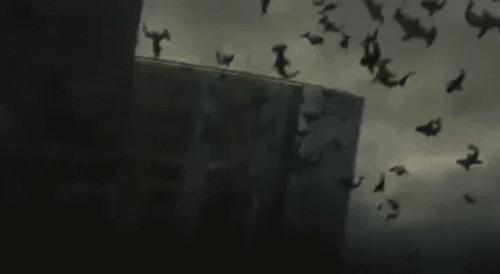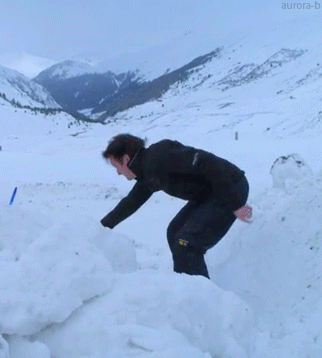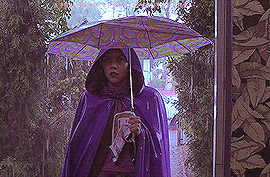

The
Documentary!
In our Genre Remix, we decided to mash together the genres of science fiction and documentary through the means of Sharknado. In our video, we took clips from the movie Sharknado and presented the viewer with information in a documentary format and style and as The Academic Writer says “we make assumptions about the form of the writing and about its purposes and subject matter” through its genres (Ede 263). Documentaries as a genre are classified by being non-fictional and teaching their audience about their subject, and keeping records. According to Michael Renov, author of The Subject of Documentary, there are four purposes of a documentary film, which are to record, reveal, or preserve, to persuade or promote, to analyze or interrogate, and to express. The science fiction genre is defined by the genre’s use of science and technology, set in the future, space, or a different world, and relate to science in some manner and are plausible, and is intended to entertain its audience. Science fiction is also described by the “Graphic Chapter on Genre” when it is mentioned that “Science fiction might evoke outer space, non-human creatures, or life in a high-tech future.” (Losh 247). Our genre remix blends documentary and science fiction to create a creatively unique way of viewing the movie Sharknado.

Gif of a Sharknado as seen in the first Sharknado movie
Image of the poster for the original Sharknado movie
The audience of our sharknado documentary is a rather large and diverse one. First, the piece appeals to fans of the science fiction genre. With the clips we chose to use from the movie, the viewer gets to see the most intense weather scenes from the movie within a five minute period, and those intent on gaining entertainment from a short montage of intense shark related weather would love to watch our documentary. A large audience of people that are interested in the subject of sharknados and weather as a whole would also find amusement from watching our documentary. While sharknados are not a real life threat, the comparisons made between real severe weather patterns would intrigue those interested in weather patterns. Finally, the average person would be interested in watching our remix, due to the strangeness of the concept of a documentary on such an outlandish thing as sharknados. Documentaries are works of non-fiction, and adding the element of science fiction is strange, yet is plausible due to its basis in science.

Image of the title of the documentary we made our comparisons to
Documentary appeals to ethos, pathos, and logos, and our documentary on Sharknado does just the same. The nature of documentaries is to present data collected or experiences and influence the viewer in a certain way. In our documentary, we implement all three of Aristotle’s appeals, but mainly focus on logos and ethos. Most prevalent in the piece is the use of logos. Throughout, the narrator explains the statistics behind sharknados, such as “It is estimated that rain falls at upwards of 6 inches an hour, and sharks fall at a rate of 5.5 inches an hour.” Furthermore, logos is seen through the descriptions and comparisons made between similar storm systems. Ethos is established through the narrator’s knowledge of sharknados. Through his descriptions and ability to analyze the footage presented to the viewer, the narrator is seen as a credible source of information. The ethos of the narrator in directly linked to the logos of the narrator, for those are his main points.

Image depicts Aristotle's three principles and an explanation of each

Examples of the weather in a sharknado
However, the piece mainly serves as a documentary on the strange weather patterns that are sharknados. Like documentaries following severe weather patterns, such as Wild Weather with Richard Hammond, the narrator attempts to capture the audience’s attention through vivid descriptions and events, while simultaneously informing the viewer of the weather. Our sharknado documentary’s purpose is to analyze sharknados in the movie Sharknado, which is one of Renov’s purposes to create a documentary, giving our documentary merit as a documentary. Finally, our documentary goes into great detail on its topic, informing the viewers about the dangers of sharknados.

Richard Hammond in his documentary on wild weather
While the piece is presented as a documentary, the piece still aims to entertain the audience as in science fiction. This is seen through the use of some scientific data presented, such as “they are very similar to hurricanes, generating winds of up to 75 miles per hour,” but when presented alongside data relevant to sharknados such as “The massive waves and hurricane force winds are the perfect combination for projecting sharks from below the seas onto the shore, jetties, and even boardwalks,” the audience is still entertained. This does right by the science fiction genre as well, by creating plausible situations based off of scientific data. The audience is further entertained by constantly being shown images from the movie, which consist of ridiculous situations where the sharks fly through the sky, all while being given facts or advice on what to do if presented with a sharknado.

Image of a girl in heavy rain
Our remix, while accurately depicting the two genres, only shows the viewers some aspects of the two, and especially shows a lack of science fiction. In order to accurately show that our remix was between documentary and science fiction, we sacrificed the story and setting of science fiction. We heavily rely on the images depicted and facts given in the style of a documentary to show that we are implementing science fiction. While we did lose the story and setting of Sharknado, the sacrifice was worth it to accurately create a documentary on the subject. If we had not created the documentary in this fashion, it would have been incredibly difficult to tell that we were creating a documentary. However, we sacrifice the use of pathos and creating our own examples in our documentary, as seen in Wild Weather by Richard Hammond. With a lack of other examples, we heavily rely on our images from Sharknado in order to get our points across for both documentary and science fiction.
Through these described genre conventions, we mix the two to present an interesting mix of the two. We are able to both inform and entertain the viewer, while analyzing the given content with our use of documentary, and were able to clearly depict the science fiction genre through the use of exaggerated scientific concepts, the plausibility of the scenario, and its purpose to entertain the audience. Through incorporating aspects from both documentary and science fiction, we were able to successfully blend the two genres together in our genre remix.

Fin Shephard (Ian Ziering) shows the proper way of dealing with sharks in a sharknado
